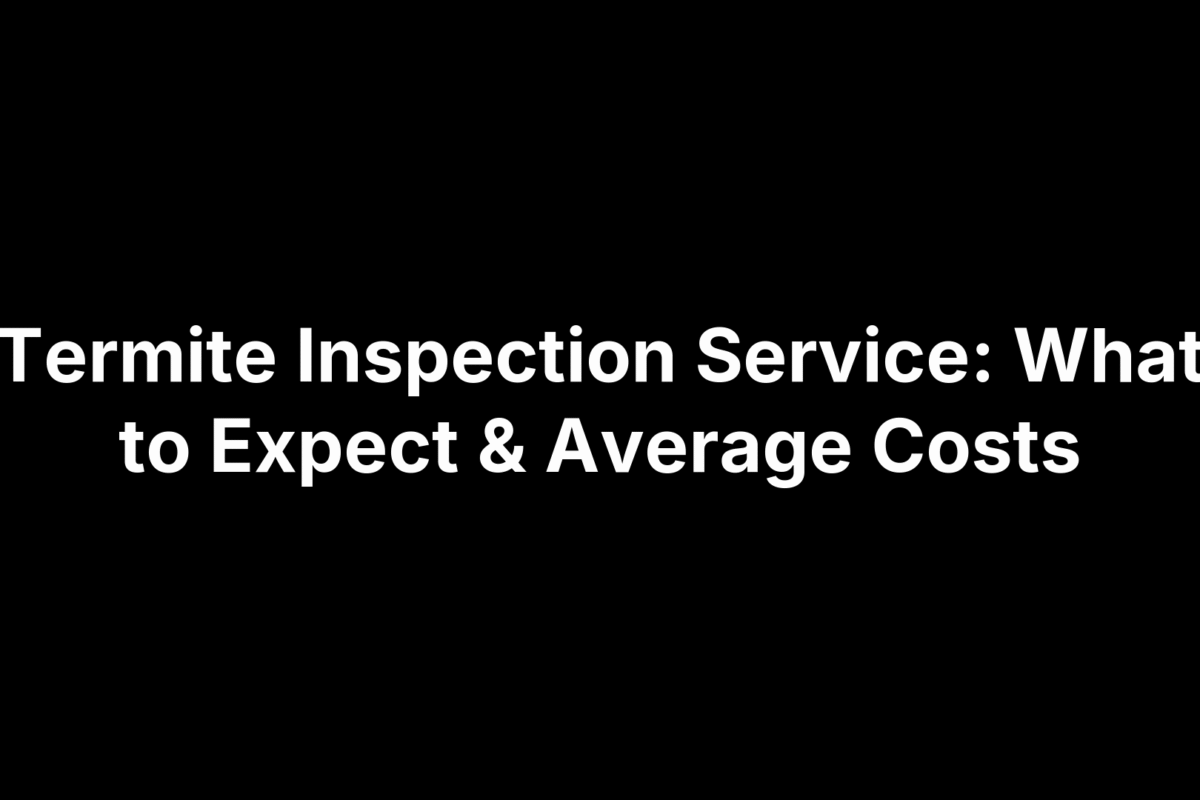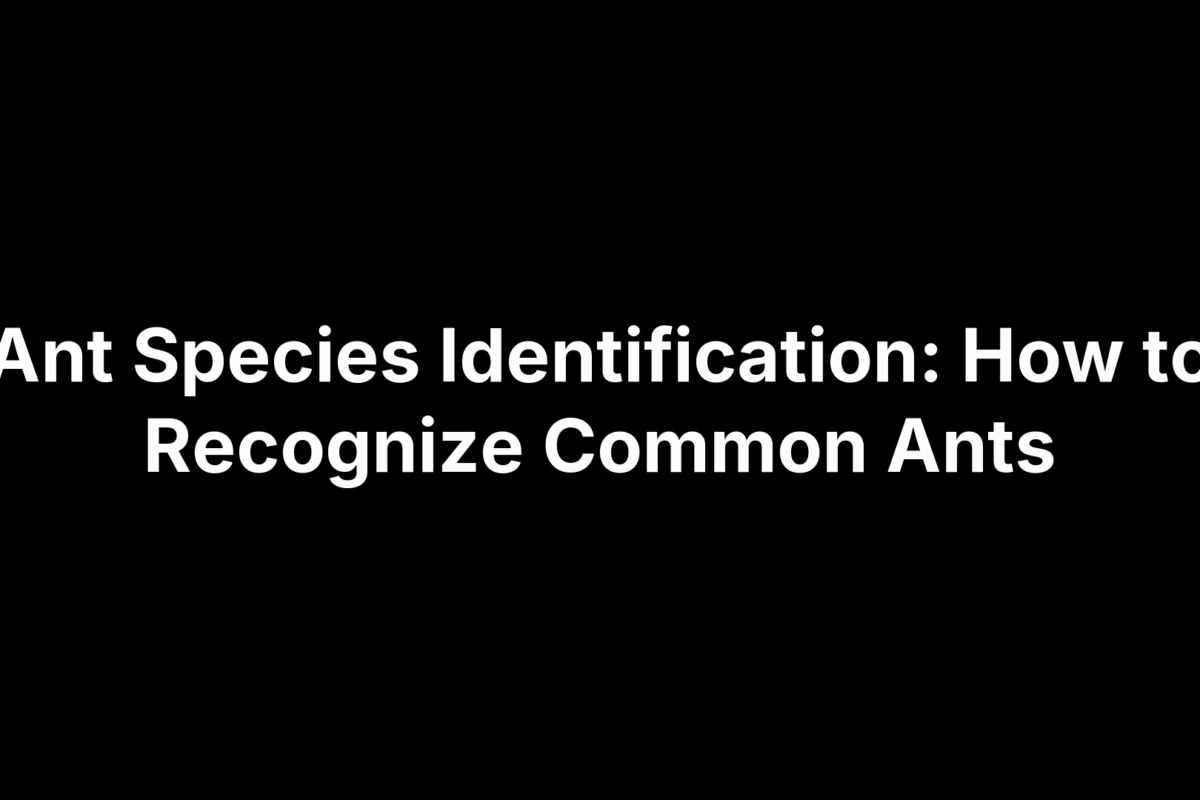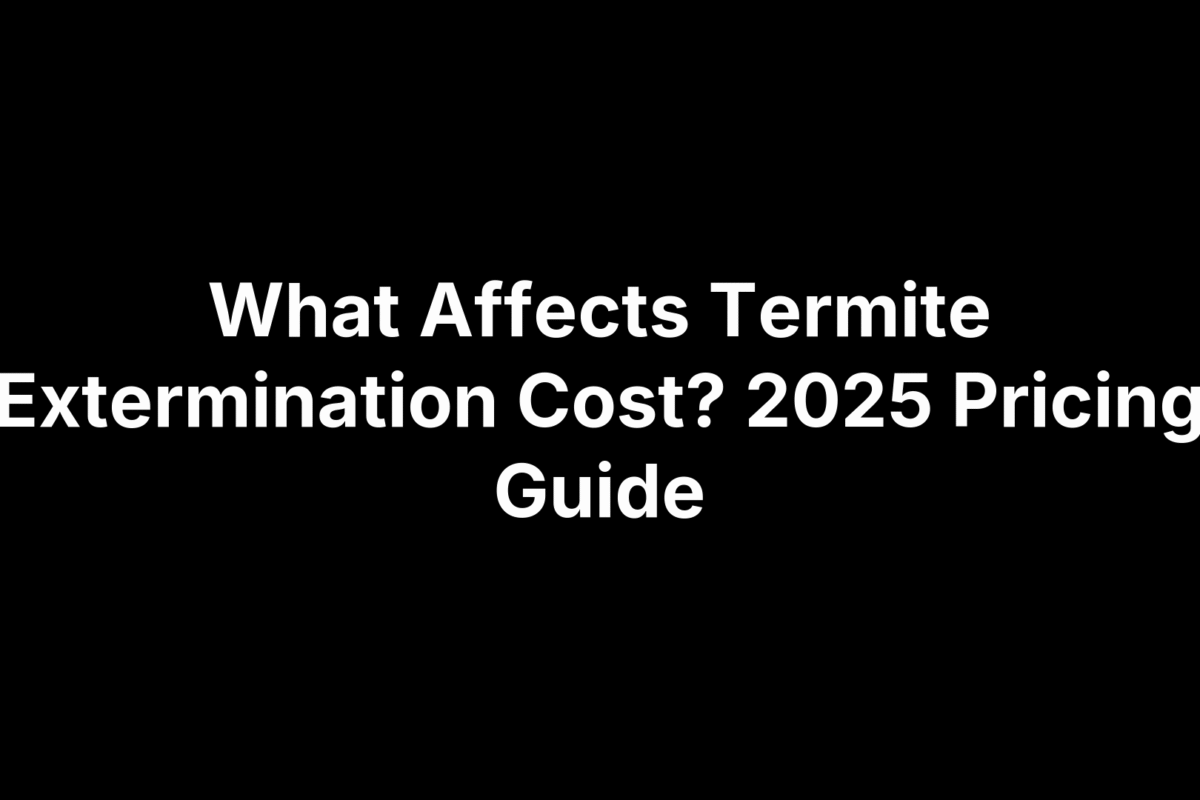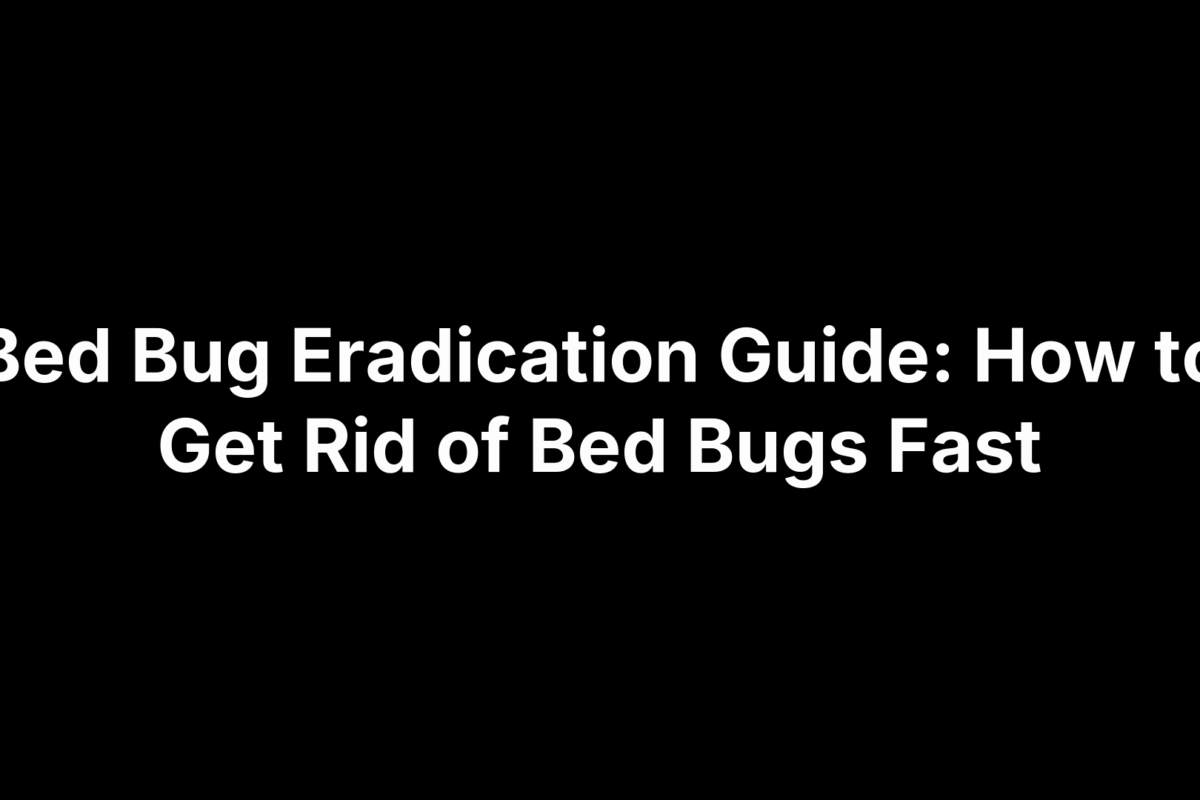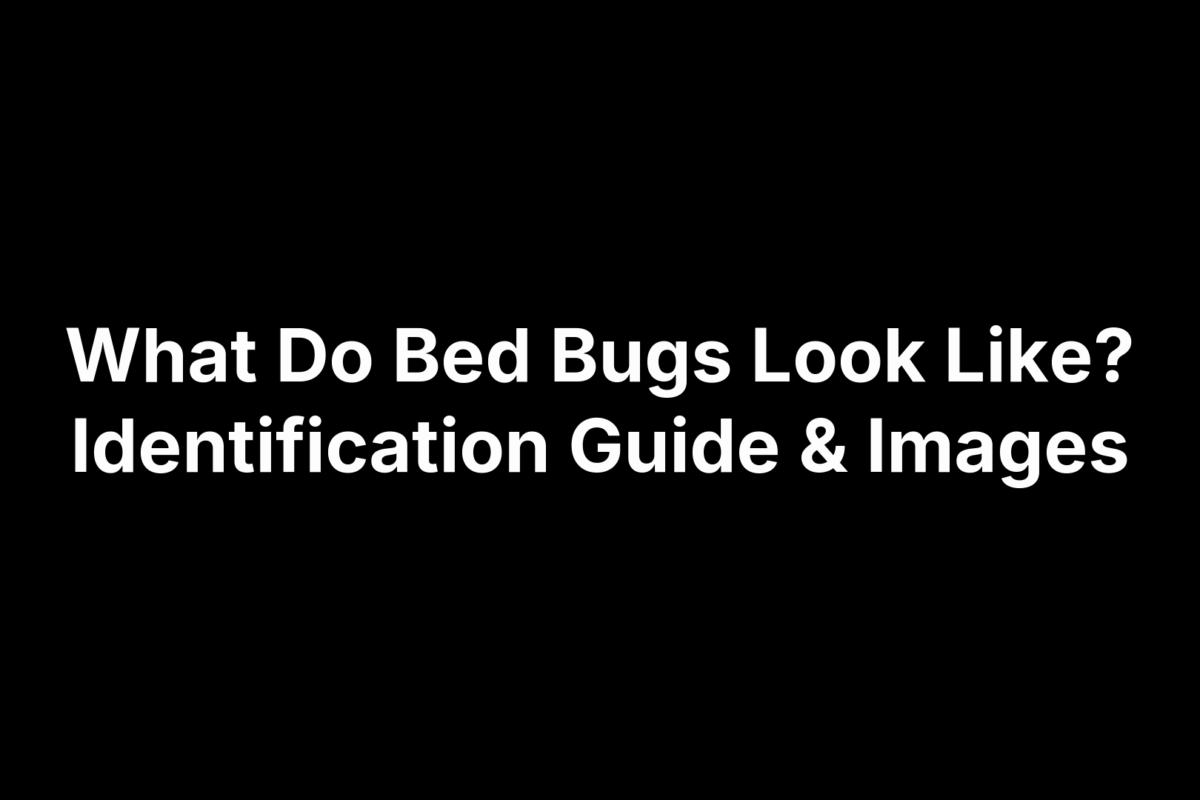Wondering what a termite inspection service actually covers? Think of it as a top-to-bottom health check for your home: a licensed technician combs through crawl spaces, attics, foundations, and landscaping with moisture meters and infrared cameras, hunting for live termites, hidden damage, and entry points you can’t see. A basic inspection typically runs anywhere from free promotional visits up to about $350, while a formal wood-destroying insect (WDI) report for real-estate deals may add another $75–$200.
Why does this matter? Termites earn their “silent destroyer” nickname, chewing thousands of dollars’ worth of structural wood before homeowners notice a single warning sign. Catching them early can spare you the average $3,000–$8,000 repair bill that follows a neglected infestation. Ahead, you’ll learn when to schedule an inspection, what happens during the visit, how pricing is calculated, and how to pick a company you can trust to protect your investment.
Why Regular Termite Inspections Matter
Termites don’t announce themselves with buzzing or gnawing you can hear. They tunnel out of sight, feeding on joists, subfloors, and studs while the house looks perfectly fine on the surface. According to industry data, these “stealth modes” contribute to more than $5 billion in property damage every year in the United States—damage that standard homeowners insurance almost never covers. Regular inspections act like a security scan, catching activity early enough to treat for a few hundred dollars rather than rebuilding walls or floors.
Inspections also protect resale value and keep lenders happy. Many mortgage companies (especially VA and FHA) will not close without a recent wood-destroying insect report. Skipping the annual check may delay a sale or force you into last-minute, premium-priced treatments.
Economic & Structural Risks of Delayed Detection
- Direct repair bills for framing, siding, and flooring can top
\$3,000–\$8,000per incident. - Persistent moisture from termite mud tubes often breeds mold, adding remediation costs.
- Severe, long-term infestations can compromise load-bearing beams, leading to sagging floors or, in extreme cases, partial collapse.
Health & Safety Considerations
Frass (termite droppings) and mold spores stirred up by damaged wood can aggravate allergies and asthma. Even more alarming, weakened structural members may fail under normal household loads—think stair treads giving way or porch supports suddenly buckling.
Situations That Increase Risk
- Geography: Warm, humid regions—Southeast, Southwest, and coastal states—see year-round termite pressure.
- Construction style: Homes with crawl spaces, slab-on-grade foundations, or extensive wood-to-soil contact are easier targets.
- Climate shifts: Longer warm seasons and milder winters expand termite range northward each year.
- Landscaping & surroundings: Mulch piled against siding, firewood stacked near the house, or dead tree stumps in the yard create welcoming gateways.
If any of these factors describe your situation, putting inspections on a set schedule isn’t optional—it’s asset protection 101.
Ideal Timing: When & How Often to Schedule an Inspection
Think of a termite inspection as routine maintenance—like servicing your HVAC—only the stakes are higher. For most U.S. homes, scheduling a professional termite inspection service once a year is adequate. If you live in a high-pressure zone (humid Southeast, arid Southwest, or any coastal county), bump that to every six months. Timing also matters:
- Spring, when winged “swarmers” emerge and are easiest to spot
- Late summer or right after heavy rains, when moisture makes hidden galleries more detectable
Booking in these windows helps inspectors read fresh evidence before it disappears, giving you maximum bang for the inspection fee.
Key Life Events Triggering an Inspection
- Buying or selling property—lenders often demand an NPMA-33 wood-destroying insect report before closing.
- Major renovations—opening walls or disturbing soil can expose dormant colonies.
- Noticing warning signs—discarded wings, mud tubes, or hollow-sounding studs.
- Post-treatment verification—confirming that a recent chemical barrier or bait system is performing as promised.
State & Lender Requirements at a Glance
Some regions make inspections non-negotiable for certain loan types:
| State | VA/FHA Loan Requirement | Typical Inspection Interval |
|---|---|---|
| MD | Yes ‑ NPMA-33 needed | 12 mos (6 mos high-risk) |
| FL | Yes ‑ coastal zones | 6 mos |
| TX | Often required | 12 mos |
| VA | Yes | 12 mos |
Rules can change, and lenders may layer on their own conditions, so verify early. Missing a required report can delay closing dates or add rush fees, whereas having a recent inspection in hand streamlines paperwork and reassures buyers.
What Happens During a Professional Termite Inspection
A good termite inspection service is part detective work, part building science. After a quick conversation about any signs you’ve noticed, the licensed inspector circles the exterior, then works methodically through every accessible zone inside. They’re looking for three things: live termites, evidence of past activity, and “conducive conditions” such as excessive moisture or wood-to-soil contact that invite future trouble. To do that, pros rely on a toolkit that usually includes a high-lumen flashlight, moisture meter, infrared (IR) camera, flathead screwdriver or probe, and—when needed—an endoscope to peek behind walls without cutting holes.
The visit feels thorough but not disruptive. You can stay home, answer questions, and even follow along if you’re curious; most appointments for an average 2,000-square-foot house wrap up in about an hour.
Room-by-Room Checklist the Inspector Follows
- Foundation & exterior grading – cracks, mud tubes, wood piles, downspout drainage
- Sill plates & rim joists – probing for soft spots where termites first attack
- Interior baseboards & drywall seams – blistered paint, pin-sized exit holes
- Window and door frames – discarded wings or frass accumulation
- Plumbing penetrations – leaks that raise wood moisture content above 20 %
- Attic rafters and roof sheathing – drywood termite pellets, shelter tubes
- Crawl space or slab edges – vapor barrier condition, earth-filled expansion joints
- Decks, fences, and landscaping timbers – any wood within six inches of soil
- Trees, stumps, and mulch beds – subterranean colony “highways” toward the house
By following this repeatable route, inspectors avoid blind spots and document findings in a consistent format lenders and warranty companies recognize.
Time & Accessibility: What Homeowners Need to Prepare
Clear clutter from walls, move stored items at least two feet off garage and basement perimeters, and unlock gates or shed doors. If you have pets, secure them so the inspector can move freely. In homes with attics or crawl spaces, make sure entry hatches aren’t painted shut and electric lights work; good visibility speeds the job and leads to a more accurate assessment.
Deliverables You Receive
Within hours—or on the spot with tablet-based systems—you’ll get a digital or printed report that includes:
- Summary of findings: active, inactive, or no termite evidence
- High-resolution photos and, often, thermal images highlighting anomalies
- Annotated floor plan or diagram showing inspection points
- List of conducive conditions with DIY prevention tips
- Written estimate for treatment or a maintenance plan if activity is found
Keep the report; it serves as proof of due diligence for buyers, lenders, and future warranty claims.
Average Cost Breakdown: Inspection, Reports & Follow-Up
Like most home-service prices, the tab for a termite inspection service isn’t one-size-fits-all. Still, there are reliable benchmarks you can lean on while comparing quotes:
- Basic visual inspection: $0–$350 nationwide, with most homeowners landing in the $100–$150 sweet spot.
- Official WDI/WDO report for real-estate closings: $75–$200 on top of the inspection fee.
- Re-inspection or post-treatment verification visit: $50–$125 if not bundled.
Many companies bundle services to soften the sticker shock. For example, if active termites are discovered, the inspector may credit the cost of the inspection toward a treatment plan—or waive it entirely when you sign a service contract. Bundles can shave 10–25 % off the combined price compared to à-la-carte scheduling.
Keep in mind that “free” inspections advertised online are rarely charity. The business model shifts cost recovery to treatment and monitoring devices, which means proposals can feel sales-heavy. A low-or-no-fee visit is fine for routine checks, but when you need a lender-ready report, paying for a third-party evaluation often buys you impartiality and more detailed documentation.
Major Cost Variables Explained
- Region & labor market – Coastal metros and union labor states run higher than rural Midwest areas.
- Size & layout – A 1,000 sq ft condo takes half the time of a 3,000 sq ft multi-story home, directly affecting labor charges.
- Foundation type – Crawl spaces and basements require protective gear, extra lighting, and longer probing, adding $25–$75.
- Multi-pest bundles – Some inspectors quote a slight premium ($20–$40) to check for carpenter ants, powder-post beetles, or rodents in the same visit.
- Rush or weekend service – Need that NPMA-33 by Monday? Expect a same-day fee up to $100.
- Free inspection model – No charge upfront, but treatment plans may start at $1,200+ even for modest infestations.
Sample Pricing Table
| Property Type | Low Price | Average Price | High Price |
|---|---|---|---|
| 1,000 sq ft Condo (slab) | $0 (promo) | $110 | $180 |
| 3,000 sq ft Single-Family (crawl space) | $95 | $165 | $275 |
| 10-Unit Apartment Complex (pier & beam) | $250 | $425 | $600 |
Use these figures as a sanity check rather than a quote. Local termite pressure, licensing fees, and even how cluttered the attic is can nudge your actual invoice up or down. Always request a written scope of work so you know exactly what the inspection, report, and any follow-up visits include before you sign on the dotted line.
Free vs. Paid Inspections: Pros, Cons & Hidden Fees
“Free” has a nice ring, but it’s not always the bargain it appears. A complimentary termite inspection service is typically a loss-leader: the company bets it will recoup costs through treatment sales. When your home is healthy, that’s fine—you may walk away with peace of mind at zero cost. If activity is found, however, you could feel pressured into a same-day contract priced higher than competitors who charge for inspections up front.
Paid inspections (usually $100–$200) flip the incentive. Because revenue doesn’t depend on selling chemicals, the inspector can focus on documenting facts and writing a lender-ready WDI report. That neutrality is why real-estate agents and lenders prefer paid or third-party providers. The trade-off is obvious—you shell out cash even if no termites turn up—but you gain a detailed report and clearer comparison shopping for treatment quotes.
Red Flags & Questions to Ask Before Booking
- Is the company licensed, bonded, and insured in your state?
- Will the technician provide a written, photo-rich report or just a verbal summary?
- Are fees for WDI letters, mileage, or follow-up visits disclosed in writing?
- What happens if I decline your treatment proposal—do I still receive the full report?
- Does the quote include a price-match or satisfaction guarantee?
Understanding Quotes & Service Contracts
Read the fine print like you’re signing a mortgage. Key line items should include:
- Inspection labor and time estimate
- Monitoring devices (bait stations) with unit pricing
- Re-inspection schedule and cost
- Treatment type, chemical volume, and warranty term
- Cancellation or transfer fees if you sell the home
A transparent contractor welcomes these questions and provides itemized documents without hesitation.
DIY vs. Professional: Can You Inspect for Termites Yourself?
Short answer: yes—you can do a basic sweep with nothing more than a strong flashlight, flathead screwdriver, and a healthy respect for cobwebs. Start outside and work clockwise, checking for pencil-wide mud tubes on the foundation, damaged or hollow-sounding porch posts, and discarded wings caught in spiderwebs near windows. Inside, probe baseboards, sill plates, and under-sink cabinetry for soft spots or frass (termite pellets). In crawl spaces or basements, look for moisture issues: dripping pipes, poor ventilation, or wet insulation. Document what you see with phone photos so you can compare month to month or share with a pro later.
Limitations & Risks of DIY Inspections
- Hidden colonies can live 12–18 inches inside wood or behind drywall—well beyond the reach of a screwdriver tap.
- Subterranean termites often enter under slabs where visual access is impossible without specialized cameras.
- Misidentifying flying ants as swarmers (or vice versa) can lead to unnecessary panic—or worse, complacency.
- Lenders won’t accept a self-prepared report, and warranties from any termite inspection service are void without professional confirmation.
- Delayed or incorrect action can add thousands to eventual treatment and repair costs.
When DIY Makes Sense
- Monthly “quick checks” between annual professional visits act as an early warning system.
- Homes in lower-risk climates or new builds with pressure-treated lumber can stretch pro inspections to every 18–24 months—if owners perform diligent DIY spot checks.
- Budget-minded homeowners can narrow down suspicious areas, making the paid inspection faster and potentially cheaper.
Even if you’re handy, think of DIY as screening, not diagnosis; a licensed pro brings calibrated moisture meters, infrared imaging, and the paperwork that keeps lenders and insurance carriers satisfied.
How to Choose a Reliable Termite Inspection Company
Anyone can flash a clipboard and a flashlight, but only a properly credentialed termite inspection service can issue a report that lenders, warranties, and your peace of mind will actually honor. Before booking the first outfit that pops up in a “near me” search, vet the company the same way you would a general contractor or mechanic—by confirming licenses, experience, and customer support systems.
What to look for:
- State license & certification – Every technician should carry a current applicator’s card for wood-destroying organisms.
- Professional memberships – Affiliations with NPMA or your state pest-management association signal ongoing education.
- Insurance & bonding – General liability and errors-and-omissions coverage protect you if the inspector misses something.
- Digital reporting – Cloud-based reports with photos are easier to share with real-estate agents and builders.
- Warranty terms – A solid company backs its findings with a re-inspection or money-back guarantee if activity surfaces within a set period.
- Customer support – Fast callbacks, weekend availability, and a clear escalation path indicate a service culture that values clients, not just contracts.
Comparing Multiple Quotes Fairly
Prices vary, but scope should not. Line up bids side-by-side using an apples-to-apples checklist:
- Inspection area covered—attic, crawl, outbuildings?
- Type of report—basic findings vs. lender-ready NPMA-33.
- Inclusion of conducive-condition notes and photos.
- Turnaround time for documentation.
- Credit or discount if treatment is required.
If one quote is much lower, confirm it isn’t omitting hard-to-reach areas or charging extra for the final paperwork.
Questions to Ask During the Consultation Call
- How long have you been inspecting homes in my ZIP code, and which termite species do you see most?
- Can I review a sample report before committing?
- What equipment (infrared camera, moisture meter) will the inspector use?
- Is the quoted price all-in, or are there add-ons for mileage, crawl space, or re-inspection visits?
- How long does your warranty last, and what voids it?
- Are your treatments pet- and kid-safe, and can you walk me through the label?
A company that answers these questions plainly—and sends the details in writing—is usually the one worth hiring.
After the Inspection: Interpreting Results & Next Steps
When the inspector hands you the report, it can feel like reading a medical chart for your house. Start with the summary page. “Active” means live termites or fresh mud tubes were confirmed—action is non-negotiable. “Inactive” indicates old galleries with no current activity; you’ll still want a preventive plan. “Conducive conditions” calls out moisture, wood-to-soil contact, or landscaping issues that make future attacks likely. Many reports rank damage on a 1-to-3 scale (cosmetic, minor structural, major structural) or use color coding. Review the diagrams and photo references so you know exactly where each issue sits. If anything is unclear, call the inspector—clarity now beats costly surprises later.
A clean report isn’t a forever pass. Most providers recommend re-inspection in 12 months (six in high-pressure zones) and sooner if you remodel, notice swarmers, or have a plumbing leak. File the digital report with your home records; lenders and buyers love organized paperwork.
Treatment Options & Expected Costs if Termites Are Found
The report will pair findings with one or more treatment paths:
- Liquid termiticide barrier applied in a trench around the foundation:
\$3–\$10per linear foot - Bait station system with annual monitoring:
\$800–\$3,000for an average single-family home - Whole-structure fumigation (mostly for drywood termites):
\$1–\$4per square foot
Most termite inspection service providers credit part or all of the inspection fee toward treatment if you sign within 30 days, so ask about that rebate.
Preventive Measures for a Termite-Free Home
Even with a green light, protect your investment:
- Fix leaks and keep interior wood moisture under 20 %
- Maintain a six-inch gap between soil and siding; swap out mulch for gravel near the foundation
- Store firewood and lumber at least 20 ft from the house
- Seal foundation cracks and utility penetrations with silicone or expanding foam
- Consider an annual monitoring contract that includes bait-station checks and written reports
Consistent maintenance plus scheduled inspections create a two-layer defense termites can’t easily breach.
Protect Your Property from Silent Destroyers
Termites never sleep, and neither should your vigilance. A yearly—or semi-annual in high-risk zones—termite inspection service costs a fraction of the repairs, refinance delays, and safety hazards that follow an unchecked colony. You now know when to schedule an inspection, what happens during the visit, how pricing works, and the smart questions that separate pros from pretenders. The next step is simple: act before swarmers do.
If you’re in our service area and want straight answers, fast scheduling, and reports lenders actually accept, reach out to the team that’s been protecting local homes for decades. Click over to Redi Pest Control LLC or give us a call to book your inspection. One hour on the calendar today can save you thousands tomorrow—and keep those “silent destroyers” from turning your biggest asset into their next meal.


